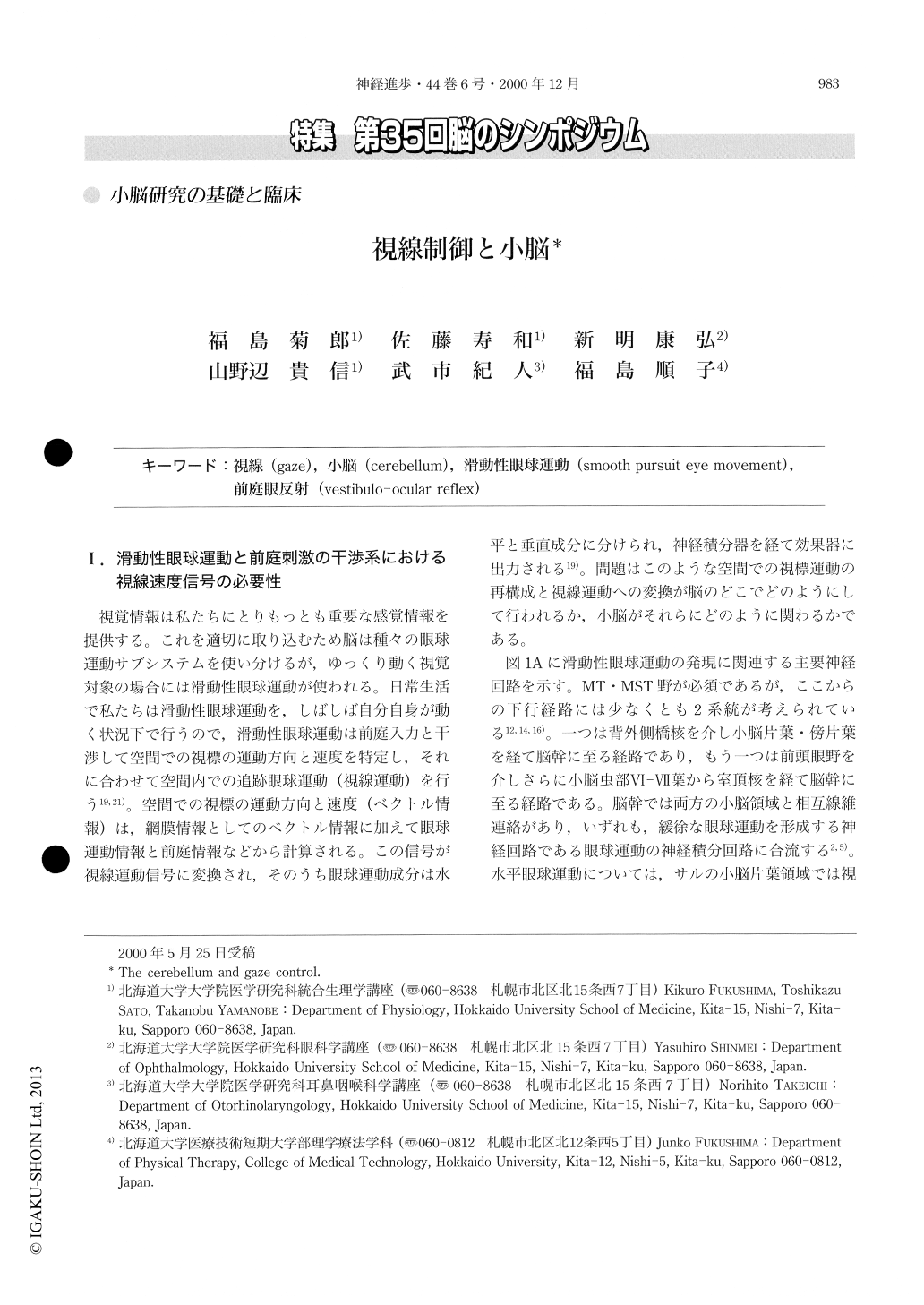Japanese
English
- 有料閲覧
- Abstract 文献概要
- 1ページ目 Look Inside
I.滑動性眼球運動と前庭刺激の干渉系における視線速度信号の必要性
視覚情報は私たちにとりもっとも重要な感覚情報を提供する。これを適切に取り込むため脳は種々の眼球運動サブシステムを使い分けるが,ゆっくり動く視覚対象の場合には滑動性眼球運動が使われる。日常生活で私たちは滑動性眼球運動を,しばしば自分自身が動く状況下で行うので,滑動性眼球運動は前庭入力と干渉して空間での視標の運動方向と速度を特定し,それに合わせて空間内での追跡眼球運動(視線運動)を行う19,21)。空間での視標の運動方向と速度(ベクトル情報)は,網膜情報としてのベクトル情報に加えて眼球運動情報と前庭情報などから計算される。この信号が視線運動信号に変換され,そのうち眼球運動成分は水平と垂直成分に分けられ,神経積分器を経て効果器に出力される19)。問題はこのような空間での視標運動の再構成と視線運動への変換が脳のどこでどのようにして行われるか,小脳がそれらにどのように関わるかである。
The smooth pursuit system interacts with the vestibular system to match the velocity of eyes in space (i.e. gaze) with target-velocity. The importance of cerebellar floccular lobe for generation of gaze-velocity commands is suggested in horizontal pursuit, but it is still unknown whether this notion is expanded into smooth pursuit in general. To understand neural correlates of ocular tracking of a slowly moving target, particularly the cerebellar role, we examined neural activity of the cerebellar floccular lobe, vermal lobule VI-VIE and periarcuate areas of head-stabilized Japanese monkeys.

Copyright © 2000, Igaku-Shoin Ltd. All rights reserved.


